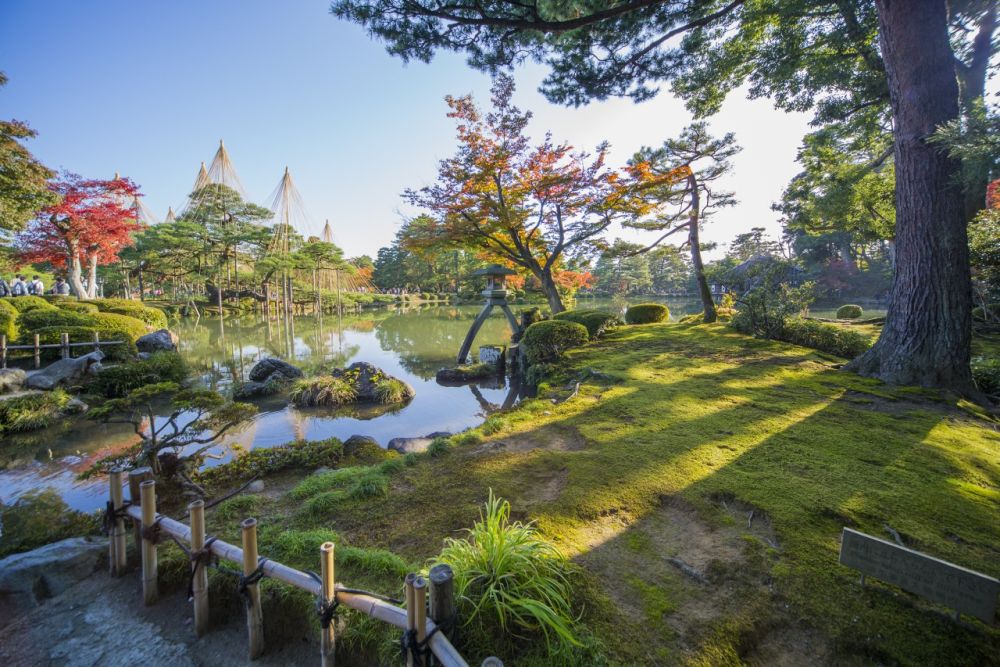

Kenrokuen Garden is not only one of Japan's most magnificent landscape gardens but also one of its most cherished cultural treasures. The name Kenrokuen means "Garden of the Six Sublimities," referring to the six essential attributes that make up a perfect garden: spaciousness, serenity, venerability, scenic views, subtle design, and coolness. Developed over two centuries by the ruling Maeda family, beginning in the 1620s, the garden was originally part of the outer garden of Kanazawa Castle. It wasn't until 1874, after the Meiji Restoration, that Kenrokuen was opened to the public, sparking its history as a tourist destination.
Throughout its sprawling landscapes, visitors can marvel at the garden's stunning attributes, such as the iconic Kotoji-toro, a two-legged stone lantern that resembles a bridge with a koto. Another hallmark is the Karasaki Pine, a tree planted from seed by the 13th lord, Nariyasu, further emphasizing the longevity and continuity of the garden. Tourists also appreciate the serene vistas of Yukitsuri, or snow hanging, intended to protect the branches of the trees from heavy snow.
Since its opening, Kenrokuen has steadily grown in popularity. The introduction of the Hokuriku Shinkansen line in 2015 made Kanazawa more accessible, significantly boosting visitor numbers to the garden. Today, Kenrokuen is recognized as one of Japan's three most beautiful landscape gardens, alongside Kairakuen in Mito and Korakuen in Okayama.
Modern tourism trends show an increasing interest in experiential and sustainable travel. Visitors to Kenrokuen Garden can enjoy seasonal experiences such as guided tours that explain the history and techniques of garden-making, traditional tea ceremonies, and even light-up events during certain times of the year that show a different, yet equally splendid, side of the garden's beauty. The focus on preserving the garden's historical and natural integrity aligns with the contemporary emphasis on responsible tourism.
Kenrokuen is enchanting year-round, with each season offering a distinctive charm. Spring brings cherry blossoms and the fresh greenery of new foliage, summer is marked by the lushness of mature trees and vibrant flowers, autumn displays a tapestry of fall colors, and winter covers the landscape with a serene blanket of snow, highlighting the elegant structures of the garden. This variety ensures a constant renewal of interest for repeat visitors and a perpetual place on the must-see lists for new tourists.
Kenrokuen Garden is open daily, with hours and admission fees varying by season. Tourists are recommended to check the latest information before planning their visit. Due to its profound historical, cultural, and aesthetic value, it remains a priority site for preservation by the Japanese government and a cherished destination for both domestic and international tourists.